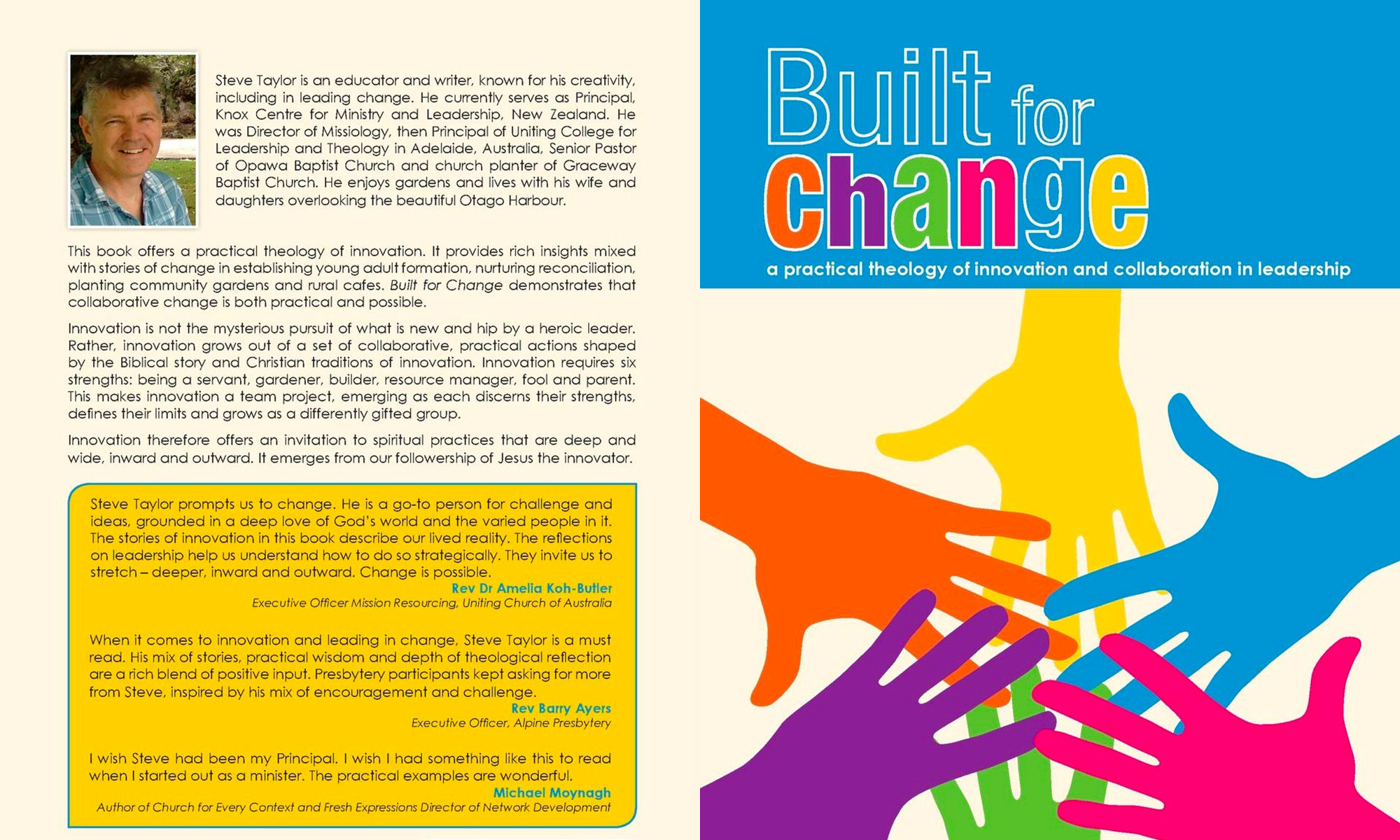Wow. It’s almost a year since I posted anything here on the Postkiwi blog. I’ve come back to start a new series on books I’m reading in relation to my work as Uniting Learning Network Director for the Uniting Church in Australia, NSW/ACT Synod. First on the list is Steve Taylor‘s Built For Change: A Practical Theology of innovation and collaboration in leadership. Steve recently took up the role of Principal at the Presbyterian Church of Aotearoa’s Knox Centre for Ministry and Leadership, based in Dunedin. That’s where I trained as a minister (1989-1991). Previously Steve was Principal and Director of Missiology at Uniting College of Leadership and Theology in Adelaide. This book’s grounded in the change process he led while Principal in Adelaide, and extends to stories of innovation and change in Australia and New Zealand.
Steve’s first section, Leading Outward, introduces six images of leadership as found in Paul’s self descriptions in 1 Corinthians 3 and 4: a servant who listens, a resource manager who faces reality, a builder who structures collaborative processes, a fool who jumps out of boxes and plays, and a parent who parents. Steve tells the stories of three innovative projects made possible through collaborative leadership: Glenkirk Cafe in Malvern, Wayside Chapel in Kings Cross, Sydney, and the Illustrated Gospel Project, a worship resource curated by Malcolm Gordon. He goes on to explore Lewin’s force field, experimentation, the change curve, and the importance of tacking.
The second section, Leading Deeply, delves into a theology of leadership, drawing insight from the ministry of Jesus and exploring the healthy tension between Biblical frameworks and contemporary insights into collaborative leadership. This is a really helpful reflection for the Uniting Church, which in many ways has its roots in movements that were highly suspicious of any one person having too much influence. It’s not that long ago that focusing on transformation, leadership and missional challenge were seen by some as the latest heresy. Steve’s contribution to the conversation helps us recognise some of our own biases and come more lightly to a considered theological reflection on leadership and innovation.
The third section, Leading Inward, provides insights into Steve’s own exploration of collaborative leadership and innovation, including lessons learnt and practices honed. This, perhaps, is the section that inspired me the most. Steve has run a series of C words in this section: call, colour, connection, community. Working in a very similar role to Steve, I resonated with his reflections on the importance of call. “What is in your hand? What among your gifts, talents and experience is of value to the organisations to which you contribute?” Having just gone through my annual vitality of ministry review this week, it’s a pertinent question. Rather than comparing myself with my colleagues, I need to grasp the particular contribution God is developing in me in relationship with my peers. I gathered inspiration for practical daily and weekly disciplines as I read through the way Steve manages to achieve what he does.
Steve finishes with a chapter on reflective leadership, focusing on four tools: journaling, the leading of meetings, breath prayer and the art of asking the question, “What could I do differently”. That last question is a great way to finish, helping us as readers to recognise Steve’s pattern of work and life as his particular journey of learning, which can inspire and inform our own without prescribing or limiting.


I am currently navigating my way about this volume too Duncan, with joy, I might add as some of the journey described in the stories I have shared in. I appreciate the insights from 1 Corinthians that Steve shares and I am journalling my thoughts.